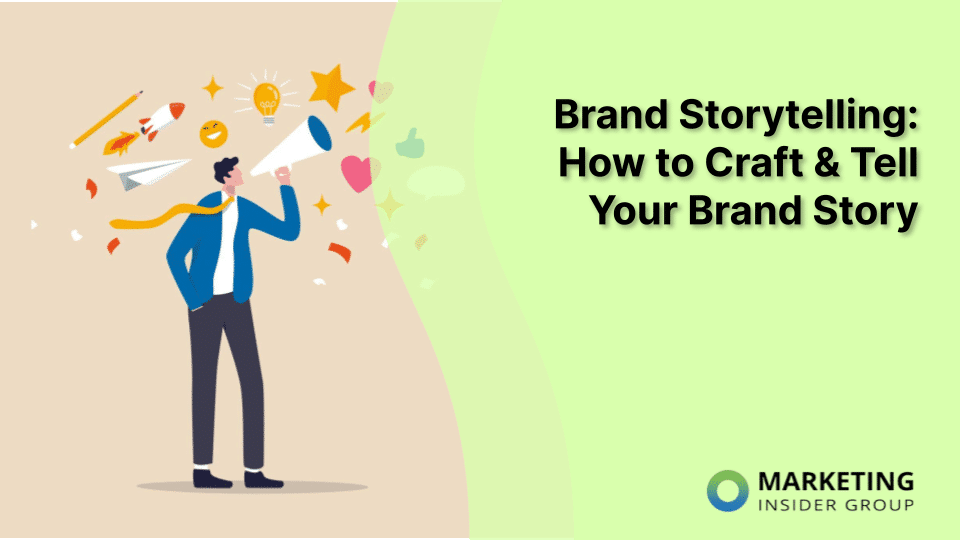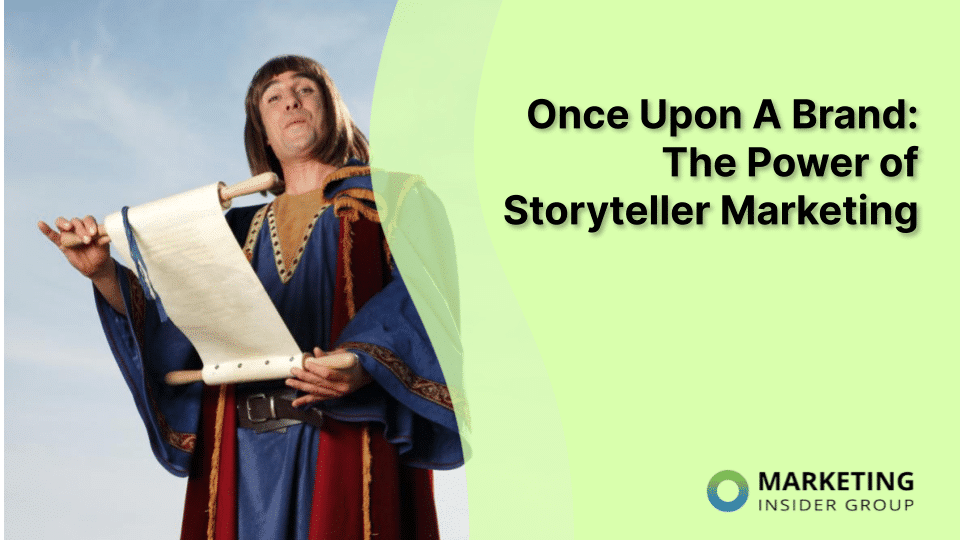
Once Upon a Brand: The Power of Storytelling in Marketing
Storytelling is the art of drawing out empathy from your audience. As I said in Mean People Suck, we can use the power of storytelling to truly get what we want in life and in business.
Storytelling has played a major role in human communication since the beginning of time. We use stories to share ideas, connect with strangers, and create meaning in our lives. It’s no surprise that storytelling has become an essential tool for marketers who want to build meaningful relationships with their audience members.
From the mouth of American author and expert business executive, Seth Godin, himself – “Marketing is no longer about the stuff that you make but about the stories you tell.”
Not convinced? A recent survey shows that 92% of consumers want brands to make ads that feel like a story. And according to Edelman, 63% of consumers said they remembered a brand story when making a purchase decision.
Storytelling isn’t just about pushing a product or service. It’s about crafting an aura around your brand that grabs your customers, stirs up their feelings, and gets them to take action.
But it’s even more than that. It’s about making an experience they won’t forget, one that hits home with your audience and builds connections that go way deeper. Through stories, the marketer builds an emotion-bridge from brand to customer that is far stronger and more compelling than traditional motivators such as price, extra features, or loyalty programs.

Image Source: Smartsheet
Let’s take a closer look at why storytelling is so important and how you can elevate your brand with tips for great story-driven marketing.
Quick Takeaways:
- Storytelling is one of the most powerful methods available for getting results.
- Because of its ability to resonate deeply, you should incorporate storytelling into your content marketing.
- The story should not be about your brand or product. It should be about the customer.
Marketing with stories makes your brand more relatable, creates an emotional connection, and gets your audience to act.
The Power of Storytelling in Action
There’s a little story about a research project I want to share with you to demonstrate the impact storytelling can have on marketing and product value perception. It’s called the “Significant Objects Project.”
When I learned about the project, I was floored. The results of it really shifted the way I viewed marketing. Michele Miller is a true content thought leader and chief storyteller at Magento. She shared this story with me a couple of years ago when we met over coffee.
So when I started writing Mean People Suck, I knew I wanted to include it. (Her husband Brian is also the amazing photographer behind my profile photo.) Here’s the story Michele shared:
Back in 2009, two reporters – Rob Walker of The Washington Post and Joshua Glenn from The New York Times – created the Significant Objects Project with the belief that “stories are such a powerful driver of emotional value that their effect on any given object’s subjective value can actually be measured objectively.”
For the project, they purchased 100 insignificant objects like those you see here. Then, they asked other writers, including journalists, mommy bloggers, and bestselling authors, to create backstories for each of their valueless Significant Objects.
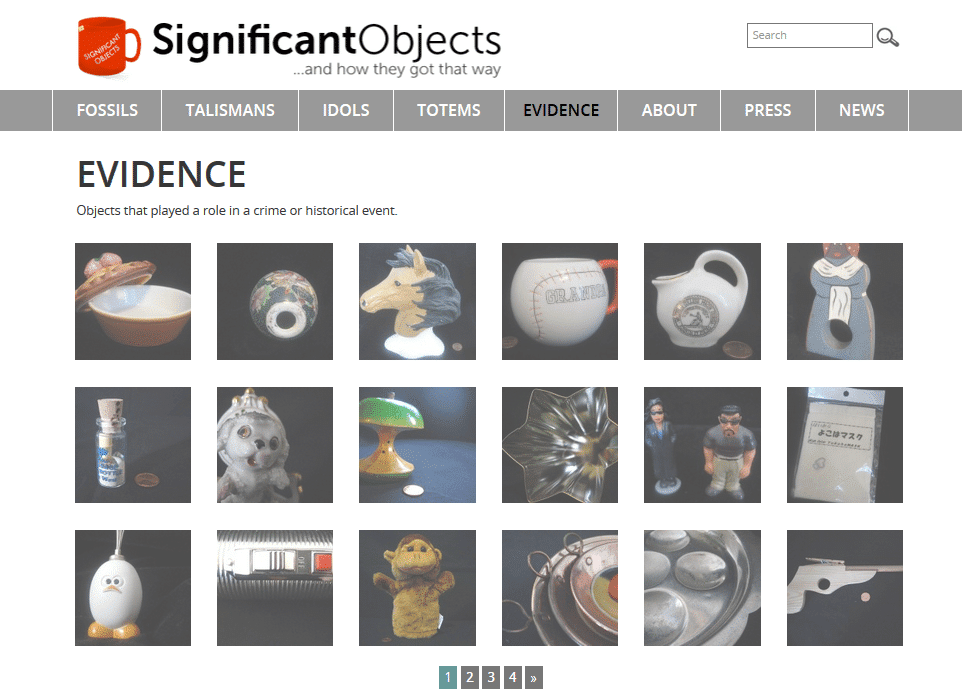
Here’s what happened:
- Rob and Joshua spent a total of $129 on 100 items.
- They added fictional stories to each item and sold the products online.
- They sold the items for a total of $3,613.
- Their final average markup value for their sample set was 2,700%.
Although the items held no intrinsic value – they were useless trinkets from thrift stores and garage sales – the stories proved their worth 2,700-fold.
For the buyers, they were paying more because of the story than for an actual physical object. That’s how much storytelling truly means to people.
Here’s the thing, storytelling isn’t just another useful tool in any content marketer’s toolkit. It’s a method that should underlie every facet of your content marketing. The truth is, nothing moves people like a good story.
Storytelling Makes Your Brand More Relatable
Oftentimes, marketers throw facts, figures, features, and brand attributes at their target audience, trying to appeal to a customer’s rational side. While these elements can be important, they can also overwhelm the consumer.
What’s more effective is creating stories and a relatable connection with your audience. People connect with stories because they provide context, emotion, and empathy. It humanizes your brand. Learning how to tell a brand story is possibly one of the most important skills marketers can have today.
For example, think about the success of Coca-Cola’s “Share a Coke” campaign. By putting customers’ names on their products, Coca-Cola created a personal connection with its audience and made its brand more relatable.
Video Source: Talia Feldman
The campaign was a huge success, with more than 150 million personalized bottles sold. And, in the United States, the campaign was credited with increasing sales by more than 2%, reversing more than 10 years of decline in Coke consumption.
Our brains are hardwired to accept information when told engagingly, rather than spewing cold, hard facts.
According to Fast Company, “When reading straight data, only the language parts of our brains work to decode the meaning. But when we read a story, not only do the language parts of our brains light up, but any other part of the brain that we would use if we were actually experiencing what we’re reading about becomes activated as well.”
Bottom line: Consumers don’t want to be sold or overwhelmed by facts about your brand – they want a true, meaningful connection.
Storytelling Evokes Emotion
Brand powerhouses like Google, Nike, Apple, and Coca-Cola share something in common – they all rely on emotional advertising to strengthen their brand presence.
Emotion is a powerful motivator in marketing. When you effectively tap into your customer’s emotions, you can inspire them to take action. Successful storytelling can elicit positive emotions about your brand because it allows you to create a narrative that resonates with your audience.
Nike, arguably one of the best storytelling brands, elicits emotions in almost every ad campaign. For example, Nike’s “You Can’t Stop Us” campaign, which features a split-screen video of athletes from different sports and backgrounds, highlights the similarities between athletes and how they all face similar challenges and struggles.
Video Source: Marketing The Rainbow
Another Nike ad campaign called “What are girls made of?” encourages people to chase their dreams and become the best versions of themselves.
Overall, Nike’s storytelling is centered around pushing boundaries, overcoming obstacles, and achieving success, resulting in creating a brand that inspires and motivates its customers on a deeper level.
Bottom line: Evoking emotion, whether positively or negatively, can create deep connections with your audience and make you more memorable.
Storytelling Builds Trust
Authenticity and trust are essential components in marketing. When customers trust your brand, they’re more likely to do business with you and recommend your products or services to others, and it can build brand loyalty over time.
Patagonia is a great example of a brand that successfully uses storytelling. They have clearly defined their brand’s mission, values, and expertise, which is clearly communicated through their showcase and commitment to environmental sustainability and ethical business practices.
Video Source: Patagonia
As a result, Patagonia has built a loyal following of customers who trust its brand and support its mission.
The key to building trust with your target audience is ensuring the message is authentic. Your brand story should be true to who you are as a brand, not fabricated or exaggerated. Transparency and authenticity show that the brand is honest and open about its operations, which can help customers feel more confident in their relationship with the brand.
Bottom line: Successful storytelling can help you build trust with your target audience as consumers relate to the brand’s value and mission.
Storytelling Delivers ROI
Because storytelling taps into the power of human emotion, it makes your brand more relatable and trustworthy. We buy from brands we know, like and trust. And so, brand storytelling delivers better ROI.
Stories make your customers the heroes and not your product. Your customers love seeing themselves as heroes. This makes them much more likely to buy from you than from brands that shamelessly promote themselves.
What This Means for Content
If a good story can create perceived value out of thin air for a valueless product, imagine the power of storytelling when applied to products and services that do already offer value.
Infusing storytelling into your content marketing is the way to create effective content that resonates with your buyers. Some of the most successful brands are already using storytelling to connect with their customers on a deeper level.
Take Nike for example. Why do people pay nearly $200 dollars for Air Jordans, a pair of sneakers that cost about $25 to produce?

The story of what Nike says about the sneaker wearer.
Land Rover, Warby Parker, Zendesk, Lego, and Johnnie Walker are all great examples of brand storytelling.
When you use storytelling instead of simply throwing facts, data, or the same old feature and benefits lists at your customers, you connect with people on a feeling level rather than through logic. And, as science will attest to, we are able to remember stories that make us feel something far longer than facts.
Think about it. Can you recall a story you’ve read – 10, even 20 years ago – that featured a character you felt empathy for?
I know I can, and quite vividly. But, I have no idea what happened in my high school calculus class. Not one iota. Or is it one fractal? But I digress!
The point is: I’d have to jog my memory to recall the facts where my mind can always tap into stories that have moved me.
9 Tips for Great Story-Driven Marketing
A recent study shows that 65% of people feel an emotional connection to a brand after hearing their story. Here are five things to consider when trying to craft your own engaging brand story:
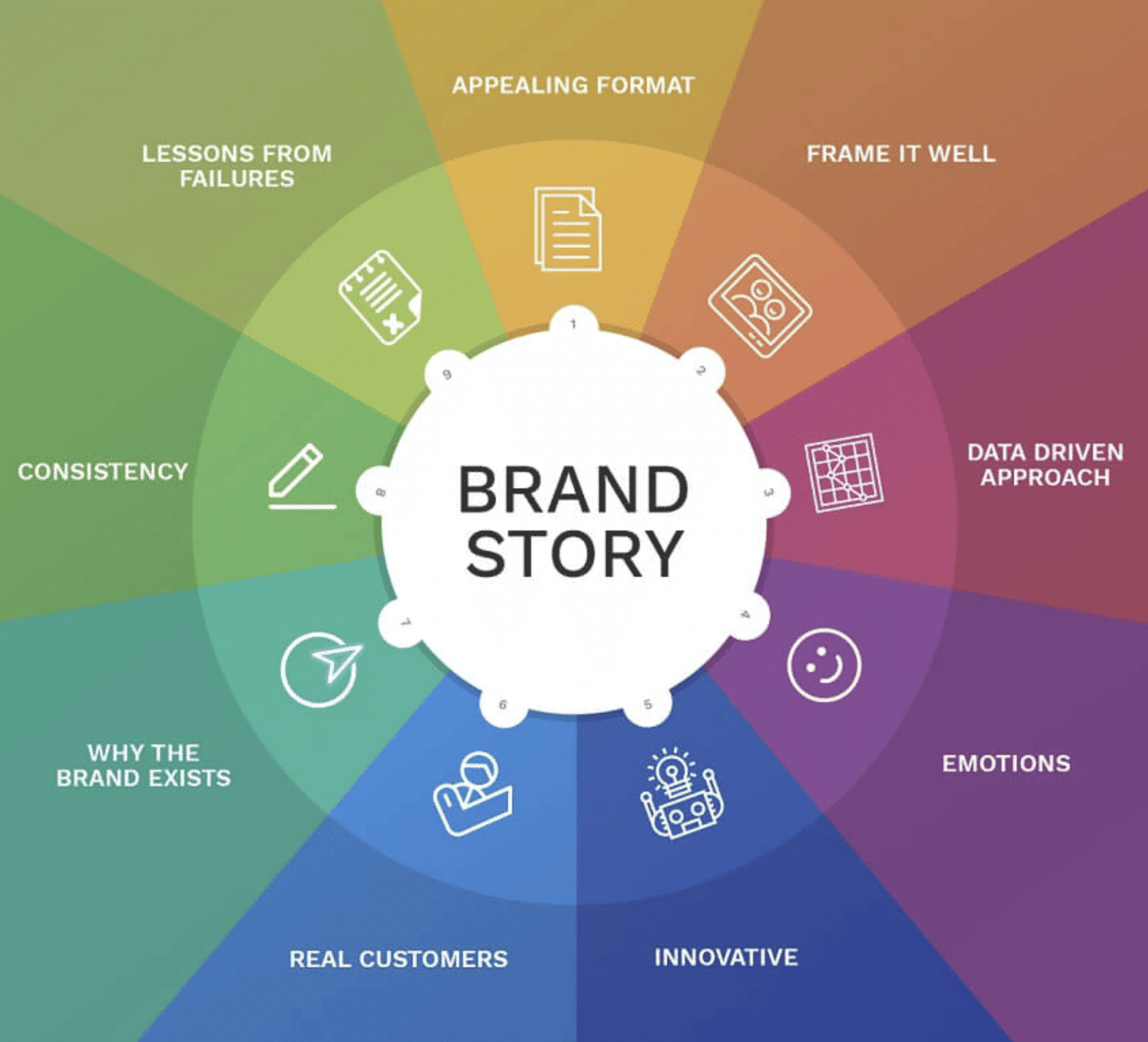
Image Source: Unspun
1. Create a strong narrative
If you’re unsure where to begin, try starting with the basics of brand building. Identify your brand story by defining who your brand is, what it stands for, and why it exists. The story you craft should be authentic, compelling, and easy to understand.
2. Know your audience
This is marketing 101. You’ve got to know who you’re talking to.
What do they like? What are their pain points? The better you know your audience, the better your stories will resonate.
3. View your consumers as the heroes
So often, marketers try to make their brand their hero, but this can come across as too sales-y, and we know that consumers don’t want to be sold.
Put your consumers and the problems they need to have solved at the center of your narrative, then define their challenges and motivations. This will help you craft a compelling story that resonates with your target audience.
4. Be authentic
Nobody likes a phony. Be real, be you.
Authenticity creates trust and people love brands they can trust. Share your brand’s journey, its ups and downs, and its victories. Authenticity is about being human and relatable.
5. Make it emotional
The best stories tug at the heartstrings.
Remember, if you can make your audience feel something, they’re more likely to remember your brand.
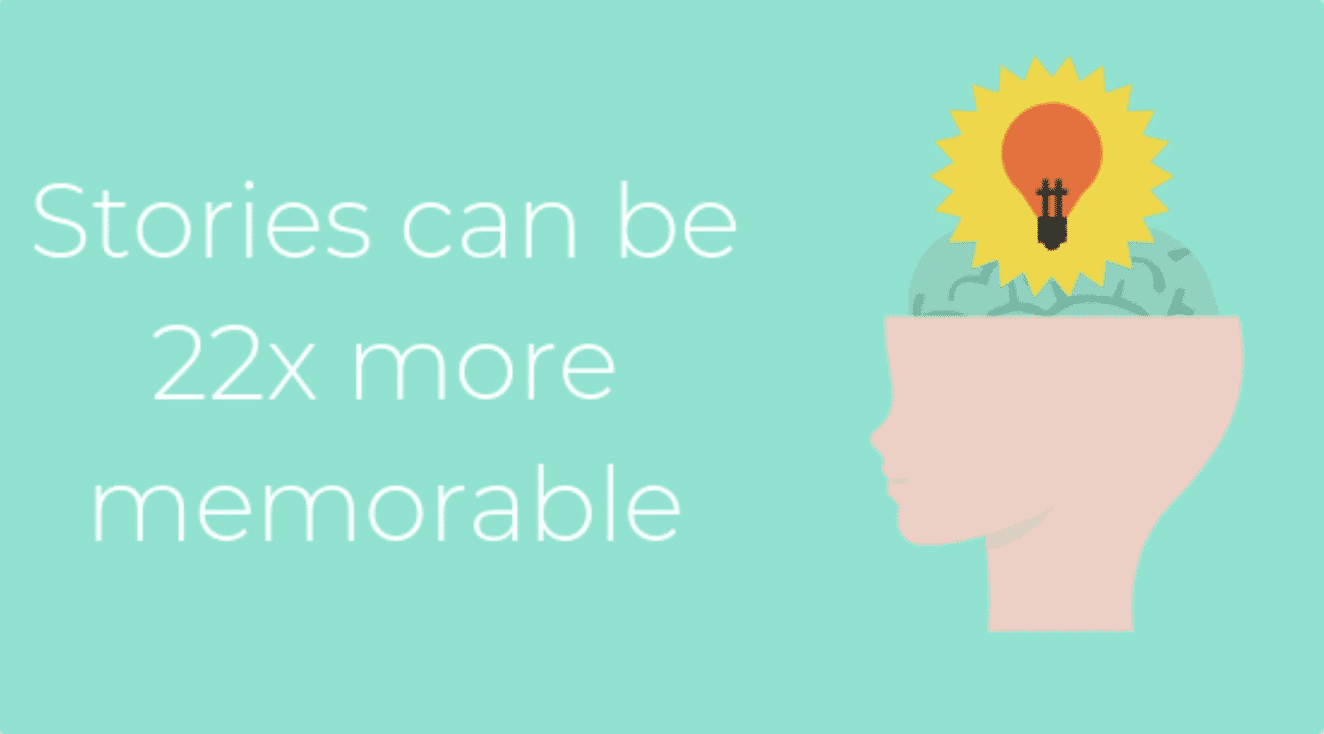
Image Source: StorySoft
Tap into emotions like happiness, excitement, or even nostalgia to create a strong connection with your audience.
6. Clearly define your marketing channels
To be effective, your brand story needs to be communicated across multiple channels. While some channels may be better suited for long-form content, like websites and videos, short-form content is better suited for social media platforms, email marketing, and advertising.
7. Consistency is key
To reinforce your brand story, keep the message consistent across all channels and touch points. Not only will this create a unified brand message, but it will help build brand recognition.
8. Make it visual
A picture is worth a thousand words, right?
Consumers love a strong visual. Pull them into your story using engaging and compelling creativity to support your overall narrative and reinforce your message.
9. Show, don’t tell
This is a golden rule in storytelling. Don’t just tell your audience about your brand’s values or mission – show them through stories. Use real-life examples, case studies, and testimonials to illustrate your points.
How to Use Storytelling in Your Content Marketing
As Michele talks about in her slideshow, The Art of Effective Storytelling, we tend to purchase what we identify with. Through
story, you can reach out to your target audience in a way that conveys why they need your product or service and how it’s meaningful for them, without you ever having to come out and say it.
In order to incorporate storytelling into your content marketing, it’s important to shift away from talking about your brand and to focus on the customer.
This goes beyond just customer needs and pain points. You have to be able to convey your messaging in a way that articulates the mindset of your prospects and existing customers.
- Spend more time getting to know your audience. Make understanding your buyers an ongoing process as your audience’s needs, wants, and preferences will change over time.
- Focus on what your product can do for your customers, not what it can do in general. What problem does it solve?
- Make it meaningful by staying true to your brand values. Authentic storytelling will have a much greater impact than a narrative that doesn’t work well with your brand’s actions, mission, and history.
- Create a narrative around your brand and ensure your marketing visuals, from images to website colors and graphics, align with this narrative.
- Use data to help inform the response to your narrative to help you understand exactly what resonates and what doesn’t.
Storytelling is too powerful to ignore. Take the time to better understand who the story is for and use a narrative to invite your buyers to become a part of it. Here are some more brand storytelling examples to inspire you.
Perfect Story-Driven Marketing Today
When storytelling is done right and authentic stories are shared across multiple channels, it can be an effective tool for building long-term relationships with your audience.
By making your brand more relatable, evoking emotion, creating a memorable experience, and building trust, you can use storytelling to create a powerful narrative that resonates with your audience and inspires action.
Want to learn more ways to build trust with your audience? The first step is creating high quality content consistently. Get started today by checking out our weekly blog content service, or schedule a free consultation now to learn more!

